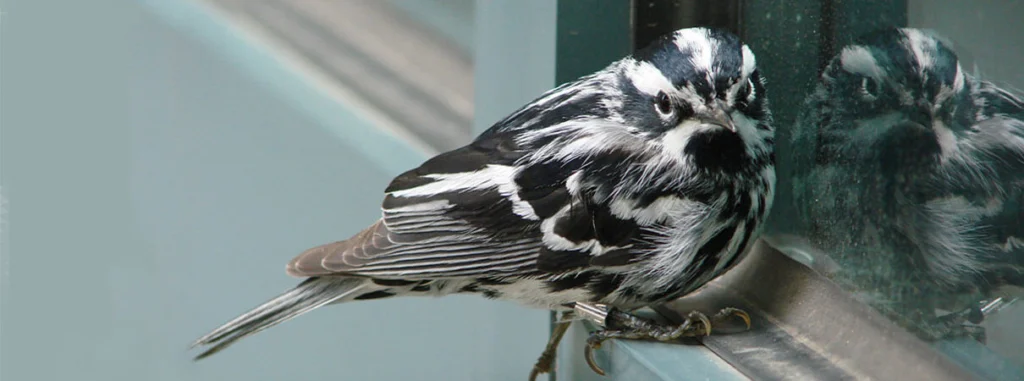Global Bird Rescue, a week that shines the spotlight on the catastrophic toll of window collisions, kicks off on September 22. Through September 28, FLAP Canada invites everyone to join American Bird Conservancy (ABC) and countless other bird conservation groups and members of the public around the world to rescue and document wild birds that have collided with buildings during their fall migration.
Each year during the peak of fall migration in North America, billions of birds navigate human-made environments as they fly south to warmer environments with more food sources. Unfortunately, millions will not reach their final destinations due to a fatal collision with a building.
Fall migration has more building collisions than spring migration for several reasons. Given that most birds have finished breeding, a higher number of birds migrate in the fall. This journey includes both adults and juveniles, whereas during spring migration, only breeding adults make the trip.
Most birds migrate at night, such as the Indigo Bunting, using the stars to navigate for thousands of miles in a small number of days. Light pollution at night and reflective glass surfaces during the day disorient them. Juvenile birds are less experienced travelers and tend to suffer more challenges, especially in urban areas. When birds see plants or the sky reflected in windows, they do not know there is a barrier and think they can fly through it, then they collide with the glass.
Many people assume birds can cope and fly away right after a collision. However, birds often end up sustaining unseen serious injuries such as bruising, eye ulcers, and fractures that prevent them from continuing their journeys. Recent research has shown that the number of birds that die from collisions each year is much higher than previously thought, numbering more than one billion. The good news is, people can help. Given the loss of nearly 3 billion birds in the U.S. and Canada since 1970, ABC is encouraging the following solutions to help birds survive and thrive.
